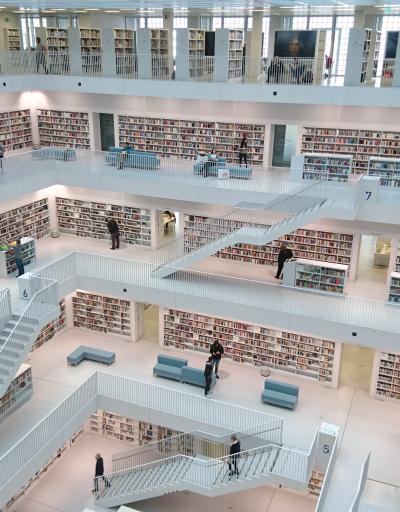
Shutterstock
Cultural and artistic education (eca, in spanish) - (strengthening of artistic skills and expressions and education of critical audiences for the exercise of cultural rights and the strengthening of cultural and creatilaw of culture: art. 16, paragraph b)

Where
Ecuador
Ecuador
When
2020
2020
Who
Ministry of education
Ministry of education
Website of the policy/measure
Website
Website
Read the full report
Go to full report
Go to full report
Description of the policy/measure
In compliance with the mandate of the 2008 constitution of the republic of ecuador, the provisions of the organic law of intercultural education and its regulations, the ministry of education undertook a curriculum updating and strengthening process of general elementary education (egb, in spanish). through ministerial agreement no. 1419 dated 09-01-1997, the ministry of education incorporated into the 10-year egb curriculum reform plans and programs the field of aesthetic culture. cultural and artistic education (eca, in spanish) is conceived as a field of knowledge that promotes basic contemporary culture and art experiences and learnings for all citizens, with local and ancestral cultural expressions, encouraging rejoicing and respect for the diversity of customs and forms of expression. furthermore, it is built on a series of assumptions that have to be taken into account for the interpretation of the different elements of the curriculum, that is, objectives, skills with performance criteria and learning standards that, together, define cultural and artistic education as a field: * focusing on contemporary cultural and artistic life. * based on the work of projects that integrate different aspects and disciplines of the arts and culture (music, cinema, visual arts, theatre, dance, photography, gastronomy, language, beliefs, crafts, etc.) * linked to learnings from other fields, to which it can contribute through the design and development of specific projects. * characterized by action and participation. * aware of the expressive skills and knowledge that students acquire outside school and contribute with at the time of their schooling. * facilitating spaces for expression, creativity and emotional development. * generating inclusion spaces that contribute to the harmonious and comprehensive development of students. * able to value the ancestral and artistic cultural knowledge of each region of the country, as a resource through which it recognizes and respects the cultural diversity of the heritage, and contributes to its conservation and renewal. the new cultural and artistic education curriculum (eca) entered into force in 2016 substituting the one in force since 1997. the 2016 curriculum consists of seven areas of knowledge for egb and eight for the general unified high school diploma (bgu, in spanish), with their corresponding subjects. as far as the eca field is concerned, it is kept as a subject with the same name. it focuses on the comprehensive education of the human being, guarantees learning from an early age, and is built around three dimensions: personal and affective-emotional (the self: identity); social and relational (the encounter with others: otherness); and symbolic and cognitive (the environment: space, time and objects). this dimensions structure processes for learning plastic arts, music and body expression which are the three languages that facilitate the various forms of artistic expression and communication. the name of this subject is the same as the area it belongs to. aesthetic education for general elementary education, and artistic education for the general unified high school diploma is taught by cultural and artistic education teachers. they are general teachers assigned to this area. the time load established for the development of the cultural and artistic education curriculum in the different educational institutions of the country contributes decisively to the training of students in the fields of expression, appreciation and artistic experimentation. the implementation of eca relied on the collaboration of expert teachers (music and plastic arts teachers) to plan interdisciplinary projects to produce a more meaningful learning, encouraging closer contact with art in its different manifestations, to optimize its teaching from a purely contemporary approach.
2005 Convention Monitoring Framework Goal(s)
Area(s) of Monitoring
Cultural Domain(s)
Transversal Priority(ies)
Results achieved
There are 13,226 education institutions nationwide that benefit from the general elementary education (egb) offering. in order to comply with the provisions of chapter 7 of the organic law of intercultural education (loei, in spanish), institutional education projects must incorporate procedures to promote the integration of families and the community into the school environment and occupy the space for collaboration and co-responsibility with the other sectors involved in their children's education process. the ministry of education, through the under-secretariat for education professional development, has offered training activities for teachers which were adapted to the needs arising from the introduction of the new curriculum, to the demands made by education institutions, and to the needs arising from the student assessment results. eca "(...) understands the field of cultural and artistic education as a space to promote knowledge and participation in culture and contemporary art, in constant dialogue with local and ancestral cultural expressions, fostering the enjoyment of and respect for the diversity of customs and forms of expression" (eca, 2015). currently, there are about 79,169 teachers in the elementary and high school education system who teach the cultural and artistic education curriculum (eca) throughout the country. based on these data, some considerations are presented that can be further analyzed.
Financial resources allocated to the policy
The ministry of education presented the scheduled 2019 annual investment plan for an amount of us$ 651,390,422.35. source: https://www.finanzas.gob.ec/wp-content/uploads/downloads/2018/11/20cn_pl...


